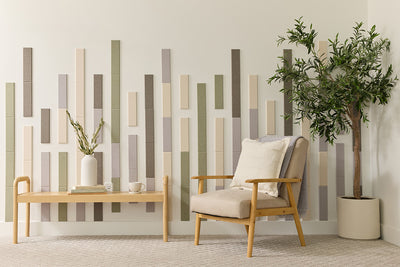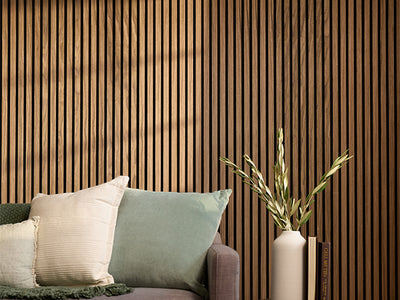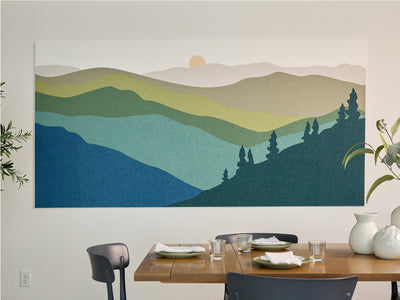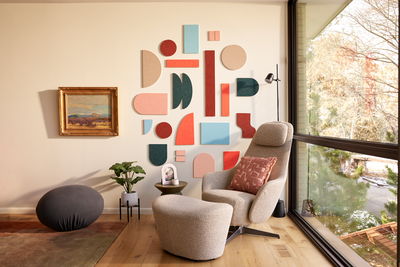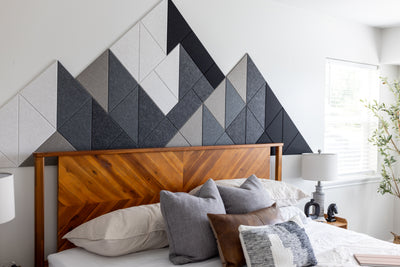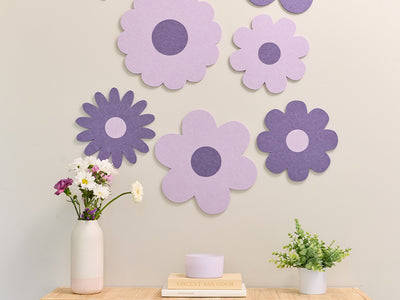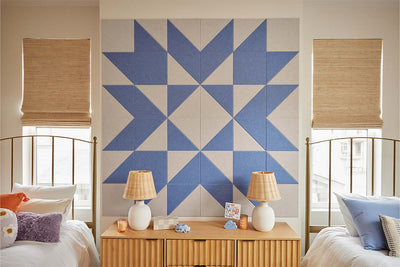What Is Mid-Century Modern Design?
You might hear this term a lot when shopping at your favorite furniture store or browsing on Zillow, but what does mid-century modern mean? Mid-century modern is a design movement going back almost a century, and a lot could be said about it, from its impact on everything from architecture to fashion.
However, when it comes to interior design, mid-century modern interiors feature a unique mixture of colors, textures, and furnishings that prioritize functionality and durability. At the heart of the mid-century space is a balance between bold centerpieces and minimalist appearances.
In this blog, we'll do a deep dive into mid-century modern design, exploring its history, major components, and how you can incorporate mid-century modern design into your living and working spaces.

A Brief History of Mid-Century Modern Design
Mid-century modern designs peaked in the late 1950s with the growing popularity of suburban living. The modernism of the interiors and architecture associated with this design philosophy was heavily influenced by Bauhaus arrangements, which featured bright colors and décor pieces that contrasted with surrounding minimalist interiors. The clean lines and then-futuristic look of that design style carried over to the mid-century modern movement.
While the mid-century modern design style peaked in the 1950s and 1960s, this aesthetic is still a uniquely inspired choice for interior spaces. There are many ways to nail this look with décor such as chairs, tables, and felt panels.

Key Components of Mid-Century Modern Interiors
Mid-century modern décor and interiors balance organic and man-made materials in terms of colors, textures, and furnishings. Spaces should be clutter-free, promoting minimalism and highlighting the durability of individual elements rather than creating a single, cohesive color or texture. Unlike today’s modernist movement, however, mid-century design leaves plenty of room for the classic comforts of home.
Let’s break down some of the key components of mid-century modern interiors:
Functionality and Clean Lines
One of the key distinctions between mid-century modern and other designs is the prioritization of functionality over aesthetics. Each element in the mid-century modern arrangement should feature a dual purpose: it should accentuate the space visually, but also serve a practical purpose.
While the furnishings typically accompanying this style aren’t as focused on comfort as they might be in a more contemporary design, they still promote the usability of the space. Durability in design is also critical for these elements, which means many of the classic mid-century modern pieces built when the style was in vogue are still functional today.
A Mixture of Materials and Textures
With a mid-century modern style, design elements aren’t bound to single textures and building materials. In many cases, seating arrangements, tables, and light fixtures balance natural and manmade materials to create appeal. Chairs and couches, for example, often feature a visible wood foundation or frame paired with fabric or leather cushions. Mixing materials and textures is the toughest part of this design style — when applied poorly, it can leave the space with a dated look.

Bold Color Accents and Palette Mixes
The color palette of mid-century modern designs utilizes a neutral foundation but branches out with bold, bright accents, in keeping with the style’s Bauhaus roots. To begin a new mid-century arrangement, many designers start by selecting statement pieces for the space, which typically utilize these bolder colors. The mindful use of color is essential to creating contemporary appeal within the mid-century modern space.
Bringing the Outdoors Indoors
Potted plants and small greenery accents throughout the space bring the natural elements into the mid-century home’s living spaces. They also offer a splash of color outside of the standard neutral whites and grays. Large windows and skylights accentuate the design of the space by bringing in as much natural light as possible, ultimately making your space more relaxing and inviting.
Minimalism
Furnishings and décor pieces in mid-century modern spaces typically feature simple, geometric shapes and clean lines that serve as the foundation for a minimalist arrangement. The interior’s focus on functionality over visual appeal means the space can be freed from clutter and ornamentation.
Each item within the space should be selected with a specific function in mind, whether that’s in terms of practical use or simply the ability to draw the eye toward an interesting focal point. And while modernism is still a facet of many modern layouts, it’s executed in a distinct, retro style unique to mid-century modern design.

Felt Panels in Mid-Century Modern Designs
Felt Right’s signature wall panels boost the colors, textures, and overall design appeal of mid-century modern spaces. Felt panels bring functionality and appealing aesthetics to your space. Most importantly, these panels are acoustic; they can optimize the acoustics of your space. With a Noise Reduction Coefficient (NRC) of 0.35, our felt wall tiles absorb up to 35% of incoming sound waves. As a result, you’ll have less unwanted noise in your space and find it easier to sit back and relax.
Felt Right’s panel designs and layouts are easy to set up and install. With 12 shapes and 32 different colors offered through our online store, as well as tailored cuts and prints, the customization options are nearly limitless. Whether you want felt panels for a mid-century modern living room or office space, you can't go wrong with Felt Right.

Transform Your Living Room With Mid-Century Modern Felt Panels
Mid-century modern design is a unique, retro style prioritizing functionality over visual aesthetics. Current trends in minimalism often draw from these arrangements, while the style itself draws from classic Bauhaus ideals. Blends of colors, accent pieces, and textures within each element establish mid-century character within a space, while a balance of organic and artificial materials ensures the space offers an unparalleled level of durability.
Felt Right offers homeowners and design professionals the chance to assemble wall panel designs that match mid-century ideals and their accompanying décor aesthetic. Ready to transform your space with new aesthetics? Try experimenting with our online design studio today.

